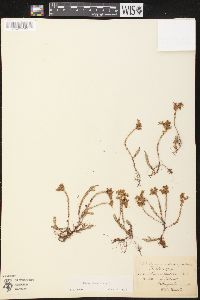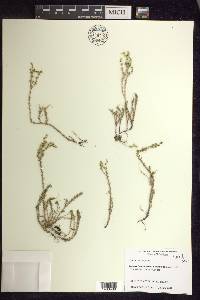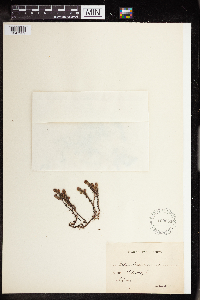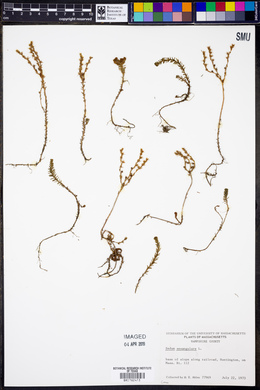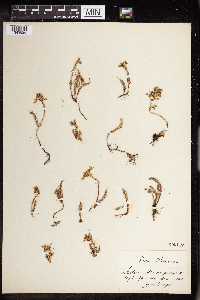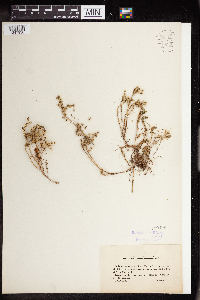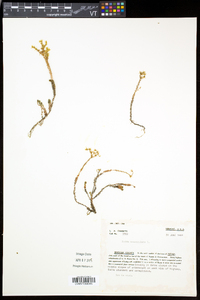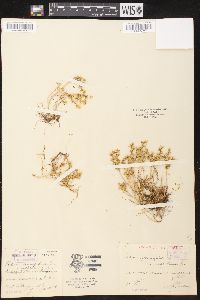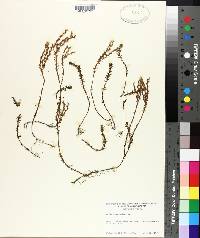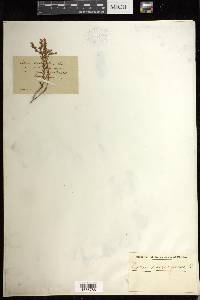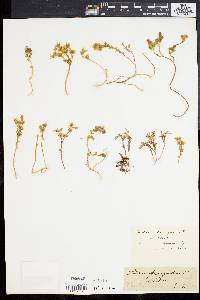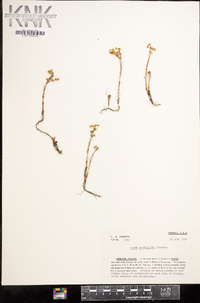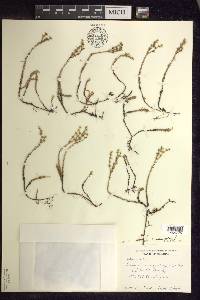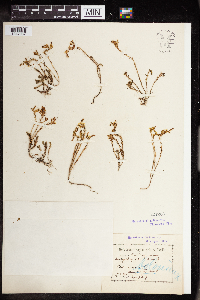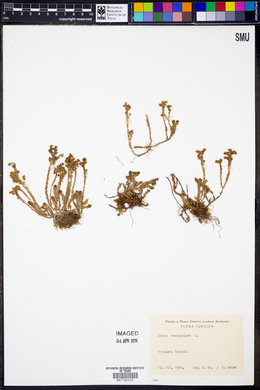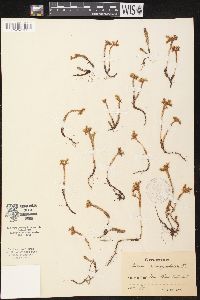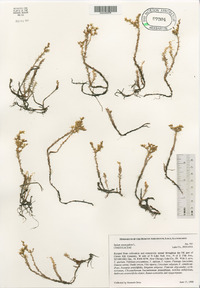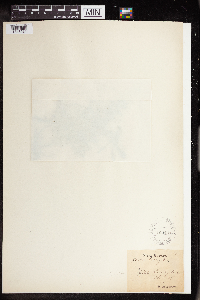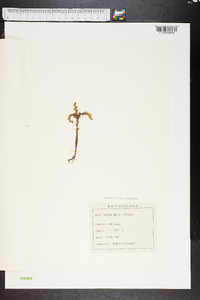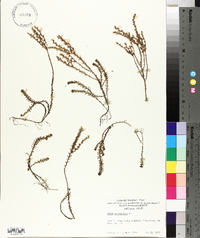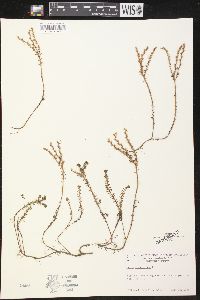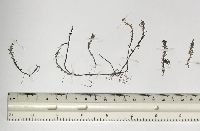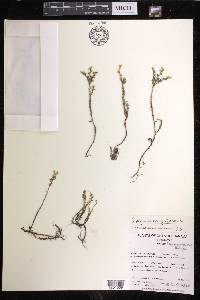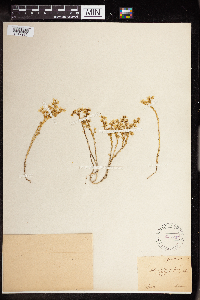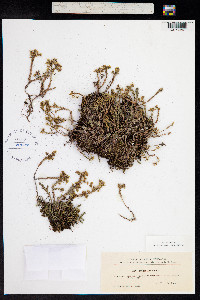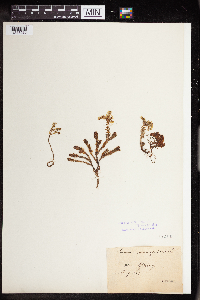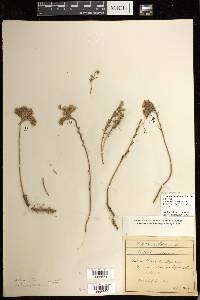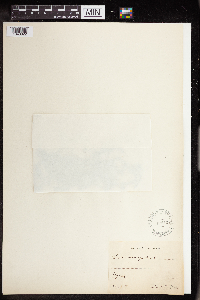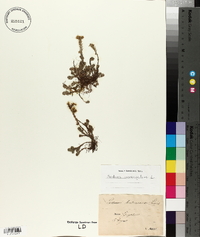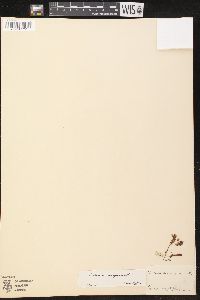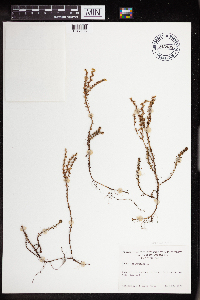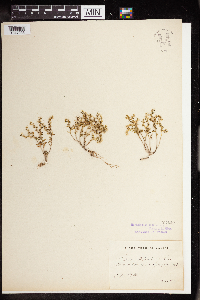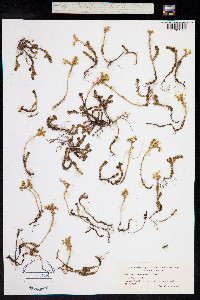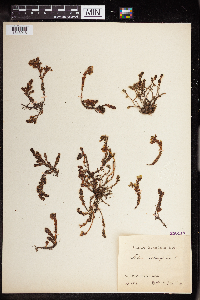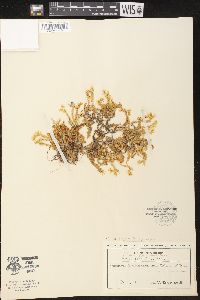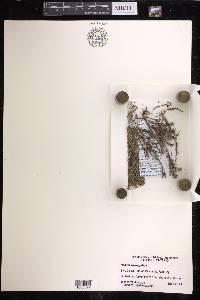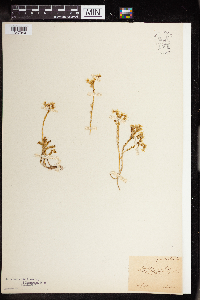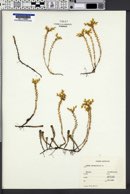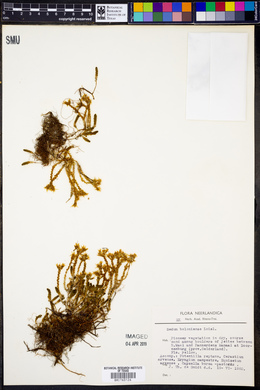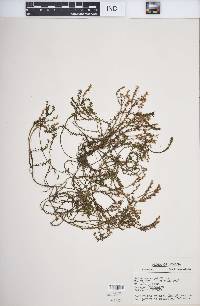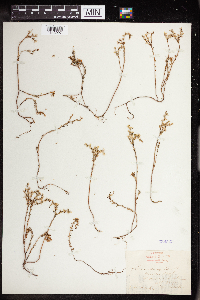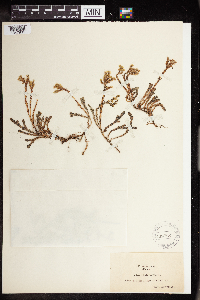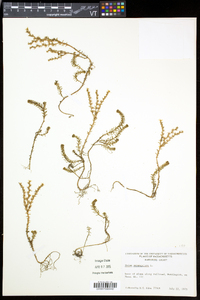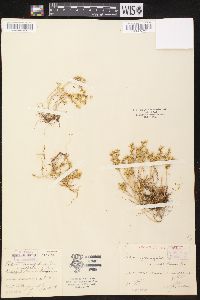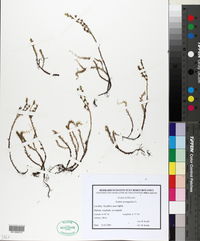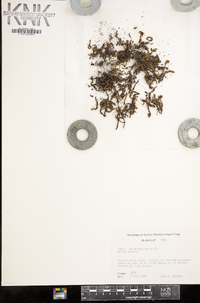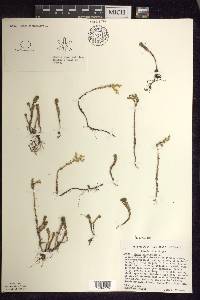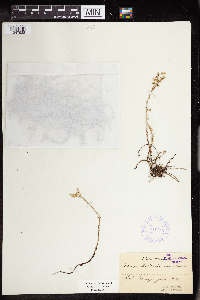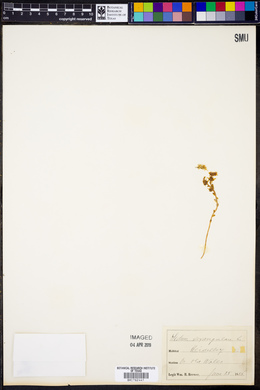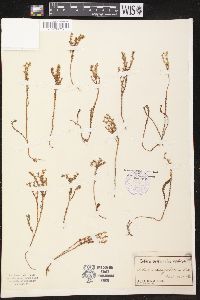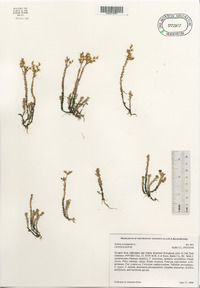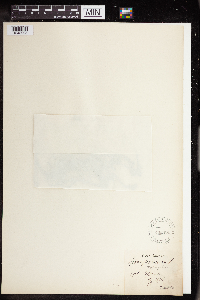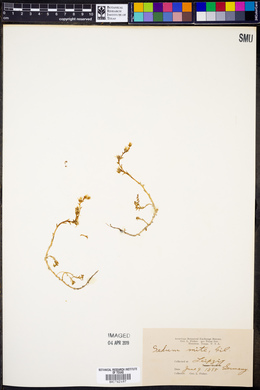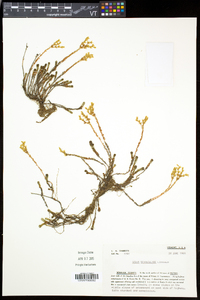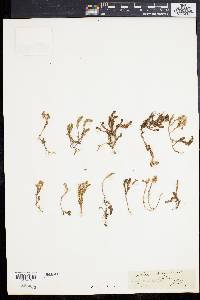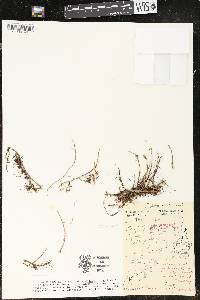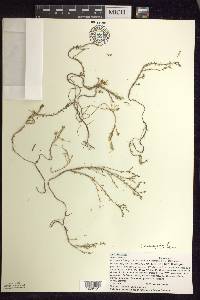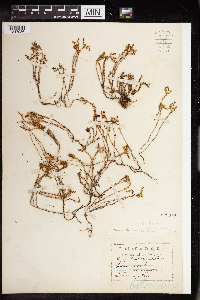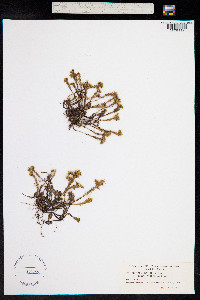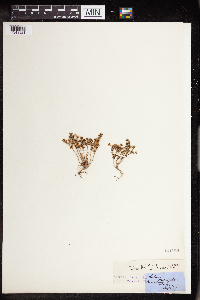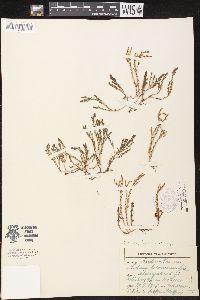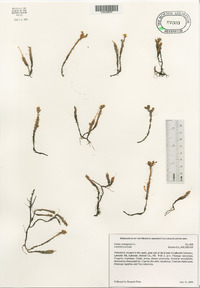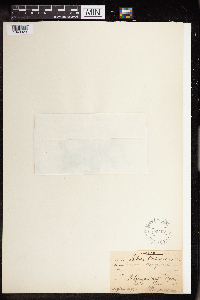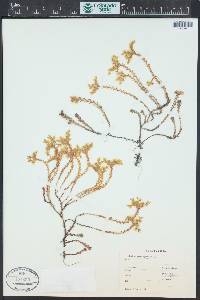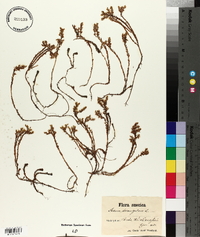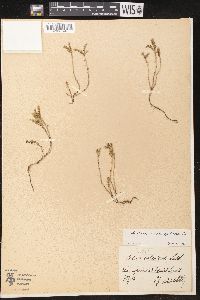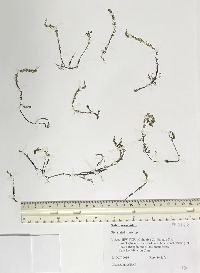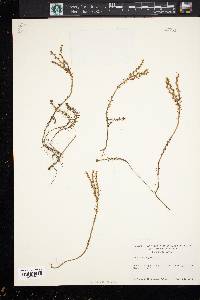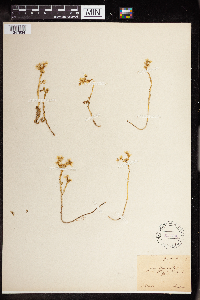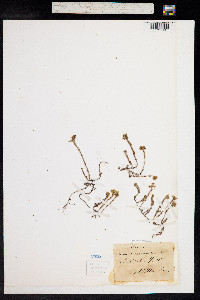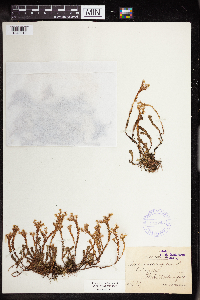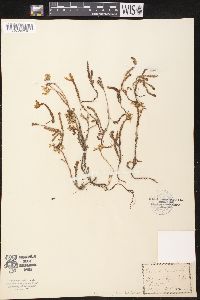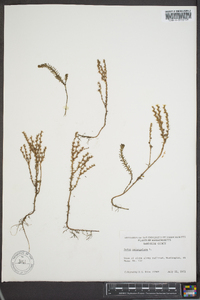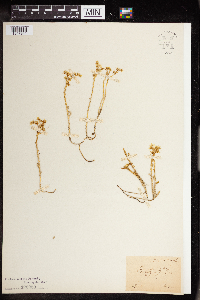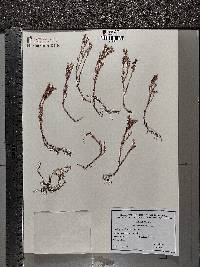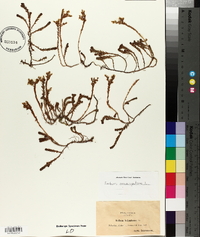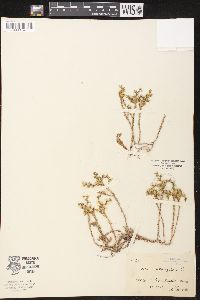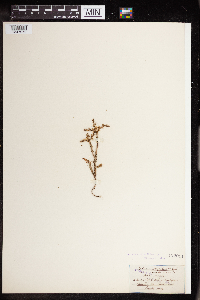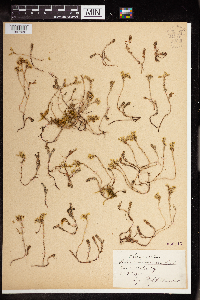Sedum sexangulare
|
|
|
|
Family: Crassulaceae
Tasteless Stonecrop
[Sedum boloniense Loisel., moreSedum mite , Sedum montenegrinum (Horák) R. L. Evans] |
Herbs, perennial, laxly cespitose, mat-forming, glabrous. Stems ascending, branched, (stolonif-erous), not bearing rosettes. Leaves alternate, (densely imbricate on nonflowering shoots), usually in 6 rows (fewer on flowering shoots), ascending, sessile; blade bright green, not glaucous, linear, subterete to terete, 3-6 × 0.8-2 mm, base spurred, not scarious, apex obtuse. Flowering shoots erect, simple or branched, 6-15 cm; leaf blades linear, base spurred; offsets not formed. Inflorescences moderately lax cymes, 5-25-flowered, (1-)2-3(-4)-branched; branches spreading, sometimes forked; bracts similar to leaves, smaller. Pedicels to 0.5 mm. Flowers 5(-6)-merous; sepals erect, distinct, yellowish green, linear-elliptic, unequal, 0.8-1 × 0.4-0.5 mm, apex obtuse; petals spreading, distinct, bright yellow, lanceolate, not carinate, 3-4 mm, apex acute or acuminate; filaments yellow; anthers yellow; nectar scales yellow, square. Carpels divergent in fruit, distinct, dark brown. 2n = 74, 111, 148, 185. Flowering late spring-summer. Roadsides, waste places; 0-500 m; introduced; Ont.; Conn., Ill., Ind., Mass., Mich., N.H., Ohio, Vt.; Europe. Sedum sexangulare was first reported as naturalized in the United States in 1942. The mature carpels have narrow brown lips along the adaxial suture.
Perennial herb 5 - 10 cm tall Stem: creeping, rooting at the nodes, forming a mat along the soil surface. Leaves: evergreen, alternate, closely overlapping, 3 - 6 mm long, linear with a blunt tip, nearly circular in cross-section, succulent. Flowers: borne terminally on an inflorescence usually made of three divergent clusters (cymes), yellow, with five sepals and five 3 - 5 mm long petals. Fruit: a dry, divergent follicle. Similar species: Sedum acre, Sedum reflexum, Sedum sarmentosum, and Sedum sexangulare have yellow flowers. Sedum sarmentosum is easy to distingush from the others by its whorled leaf arrangement. Sedum reflexum differs by having erect follicles and five- to nine-parted flowers, while S. acre has broad, egg-shaped leaves. Flowering: mid June to mid July Habitat and ecology: Introduced from Europe as a rock garden plant, this species has since naturalized in cemetaries. Occurence in the Chicago region: non-native Etymology: Sedum comes from the Latin word sedo, meaning "to sit," referring to the manner in which some species attach to walls and rocks. Sexangulare means six-angled. Author: The Morton Arboretum Much like no. 12 [Sedum acre L.]; lvs linear, subterete, blunt, 3-6 mm, alternate, crowded to form 5 or 6 ranks; infl of ca 3 divergent, sympodial cymes; pet 3-5 mm; 2n=74. Native of Europe, escaped from cult. in N.H. and Vt. June, July. Gleason, Henry A. & Cronquist, Arthur J. 1991. Manual of vascular plants of northeastern United States and adjacent Canada. lxxv + 910 pp. ©The New York Botanical Garden. All rights reserved. Used by permission. |


